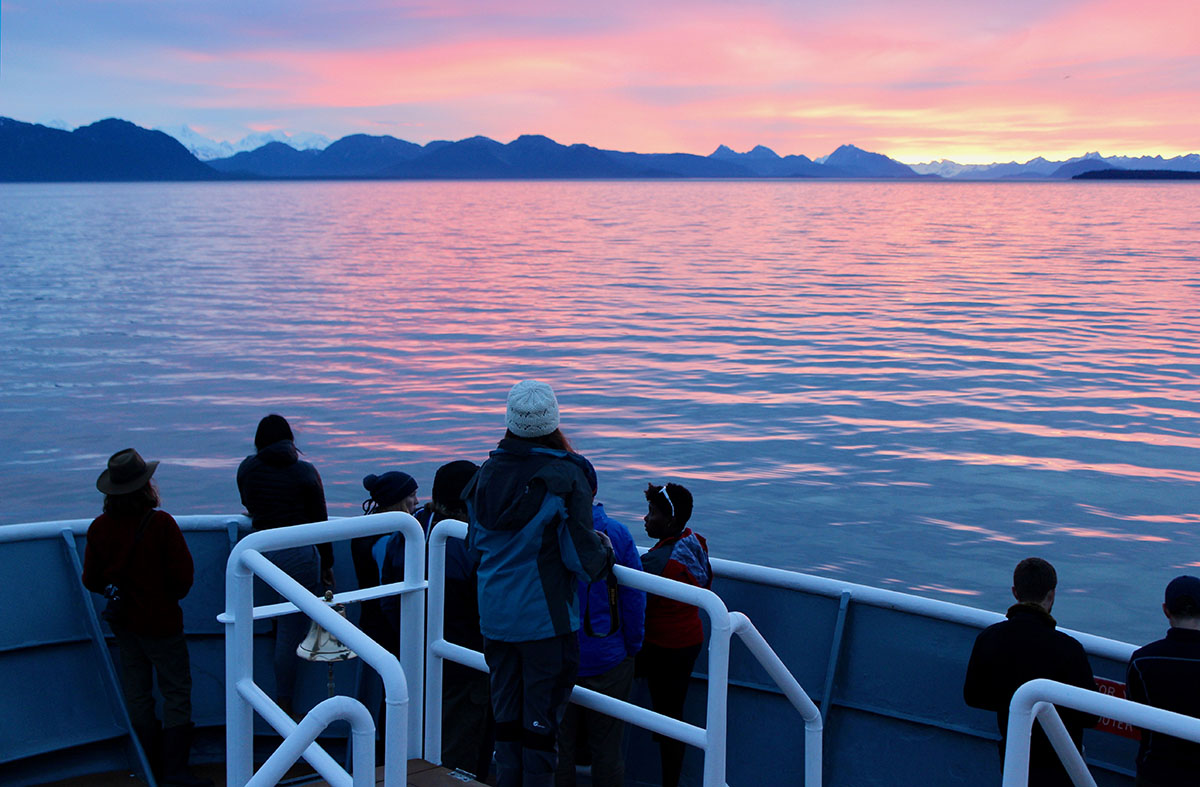
A sunset photo from on board the National Geographic Sea Lion, during my recent life-changing trip to Alaska. (Photos by Katherine Baker/Columbia University)

A sunset photo from on board the National Geographic Sea Lion, during my recent life-changing trip to Alaska. (Photos by Katherine Baker/Columbia University)
I sometimes have to remind myself that I live in a bubble. As a student at the Columbia University Mailman School of Public Health in the Environmental Health Science Department, my professors and classmates and I discuss realities of climate change on a daily basis. It’s easy for me to forget that, still, not everyone is as convinced.
Turning on the news, scrolling through my social media feed, or speaking with people from outside of my department can quickly remind me of the divisive world we live in, and that climate change is still, for many, up for debate.
I try to understand where these people are coming from. Many of us are removed from facing immediate realities of climate change. We enjoy our climate controlled living spaces, and may not live in areas where impacts are as obvious as others. On top of that, not everyone has been well-educated in the topic, nor has a solid grasp of how to read and interpret scientific data. Fake news and profit-driven pseudoscience can confuse people even further. There’s a lot out there, and it can be easy to get lost.
And when there’s a financial stake in the game, it can be tempting to turn a blind eye to any potential negative altercations of a sustaining activity that may be contributing to the problem. No one enjoys confronting the idea that what they’re doing could be harmful, and turning a blind eye is easy and enticing.
As someone who hopes to change the tide and help more people understand the reality of climate change, I often grapple with how I can bridge these knowledge and comprehension gaps for skeptics. To work collectively toward a more eco-friendly future, it’s important to work with, rather than against, as many people as possible, which makes helping skeptics understand the reality of climate change so much more vital.
If you want to know what keeps me up at night, it’s this. And it was something I had really been ruminating even more than usual right before my recent trip to Alaska.
I had never been to Alaska before this trip. I grew up in Wisconsin, and then spent roughly 6 years living in the New York City area, while enjoying later stints of time living in Denver, Paris, and the Twin Cities. I’ve been fortunate to travel around the country and globe. But Alaska was different. Very different.
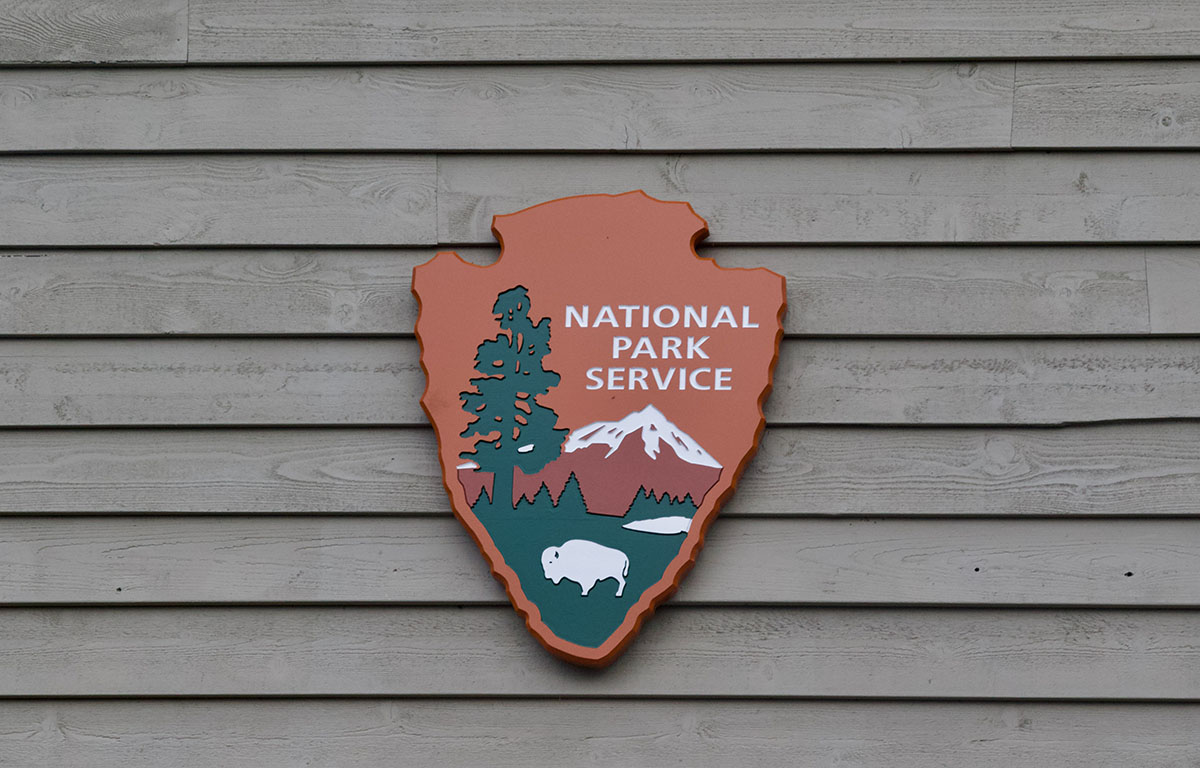
Geographical and landscape differences aside, what struck me as the most unique in Alaska was the general consensus among people who live there that climate change is real, and it’s happening right now. Though I can only speak from my personal experiences, it seemed climate change in Alaska was not a political issue nor a subject of debate. Rather, it was spoken about matter-of-factly—a striking difference from many places I have visited or lived in (even progressive ones).
This realization begged the questions: How and why are these people so accepting of climate change? And how can they help convince others about about the reality of what’s going on?
Slowly, through conversations, I found the answer to my questions. I spoke with naturalists, fishers, national park rangers, native Alaskans, local residents, and heard from the Lieutenant Governor of Alaska, gaining tidbits of insight from each, identifying themes and patterns between their stories.
First, it seems they all accept climate change because they see it in their daily lives.
Alaska has been called ground zero for climate change—and for good reason. With temperatures rising faster than those of the rest of the country, and obvious fluctuations in precipitation and weather patterns, those I spoke to didn’t seem to deny climate change because to them, it’s quite obvious.
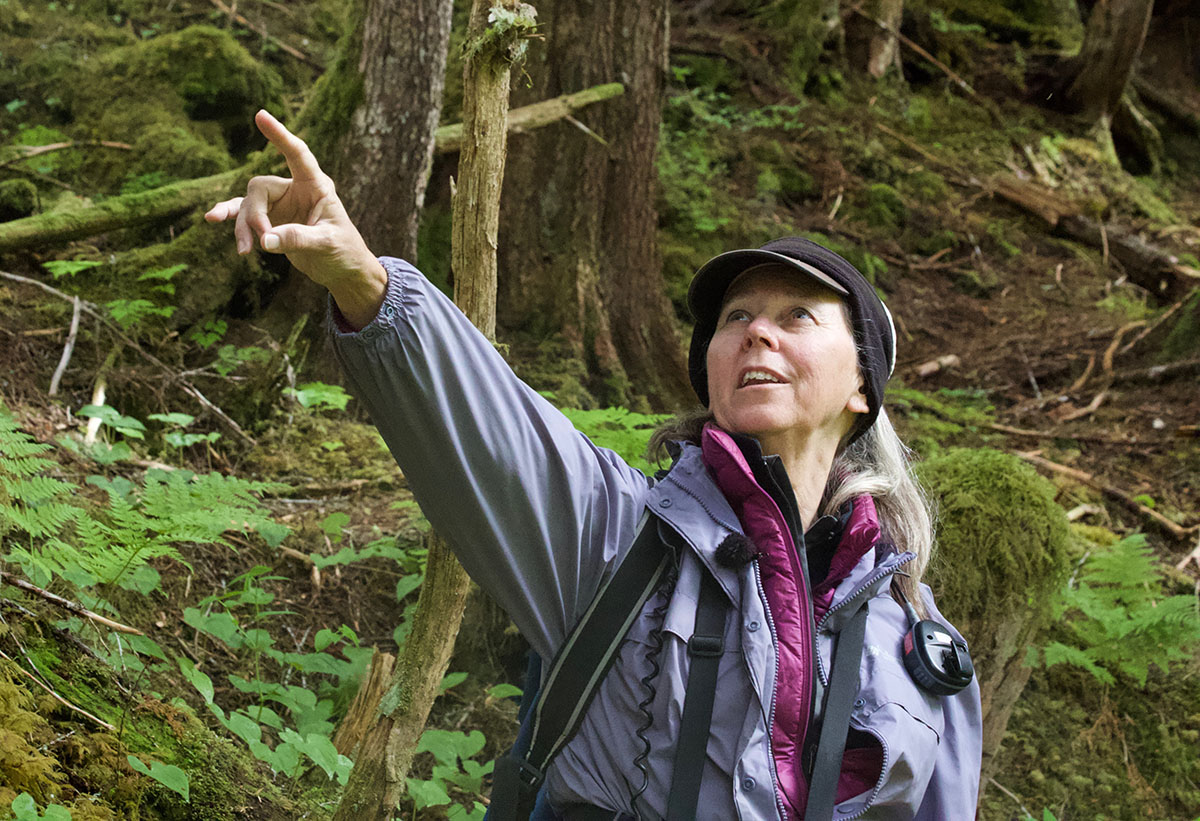
Many spoke about changes they’d seen in their own lifetimes: noticeably warmer temperatures, shrinking glaciers that were visible to the eye over short periods of time, increases in snowfall, shifts in frosts and seasons, fluctuations in wildlife populations, and new challenges in agriculture, to name a few.
A Glacier Bay National Park Ranger who wishes to remain anonymous told me that since the most recent administration took over, park rangers and pamphlets are unable to speak about global climate change—only changes that are happening in their immediate area.
Though obviously a frustrating censorship, I began to wonder if perhaps this approach—speaking about local rather than global change—could actually be useful in fostering change. And that maybe, many who refuse to admit to climate change will be hesitant to do so until they have to face it themselves, or until it starts to interfere with their daily lives or impacts them financially.
Inspired, I questioned those who lived and worked in Alaska about how they suggested speaking with skeptics about climate change. And again, a theme emerged: Speak about realities that are changing right in front of you. That way, I realized, there is no room for denial, nor is there need to bring in politics, money, or even science.
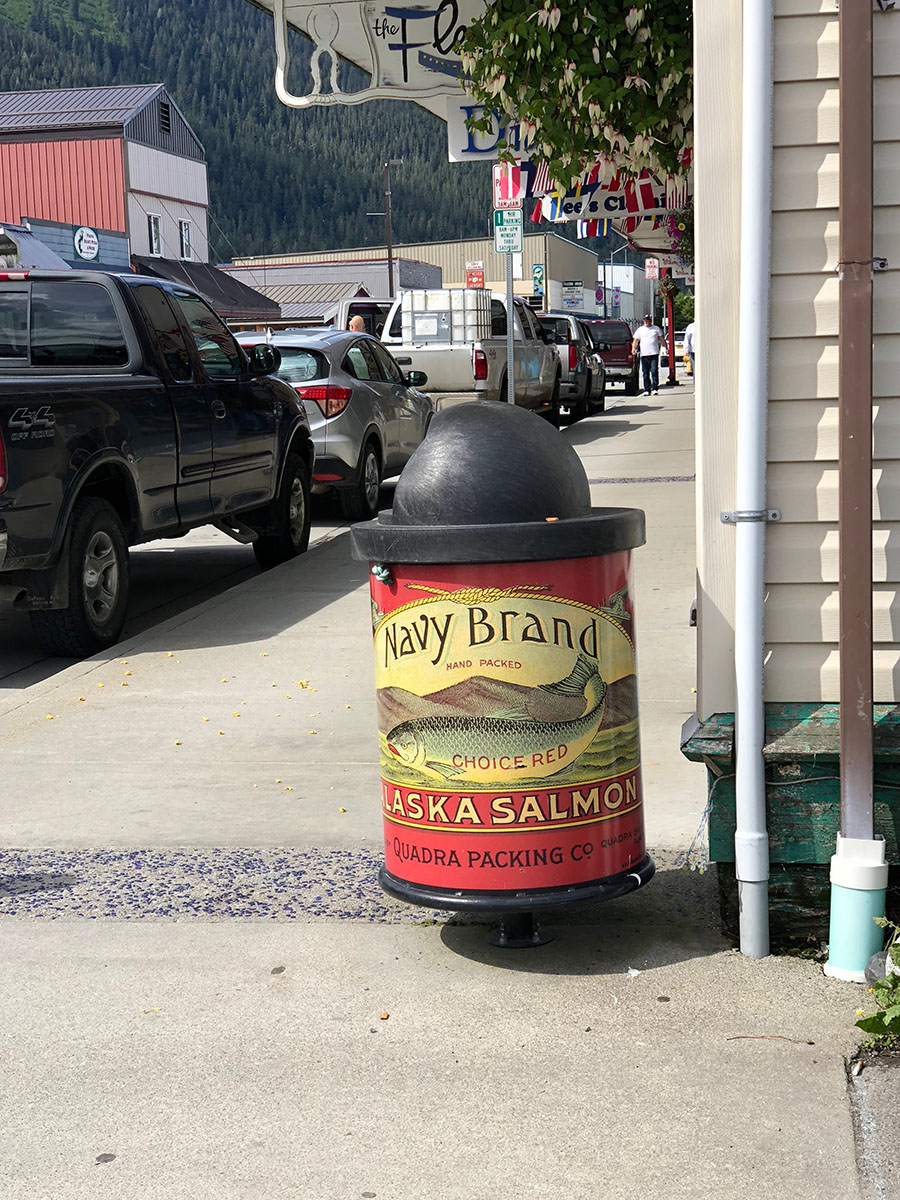
What I took most from my entire experience in Alaska is that to transform skeptics into believers you have to make climate change real to them.
Travel can be perception-changing, and videos, photographs, and data can be effective for some, but for those where facts aren’t enough, maybe, just maybe, their own two eyes, their grocery bills, or the flooding in their backyard will be.
Perhaps as scientists, journalists, and advocates, we have to think less “global,” and go more “local.” What I mean by this is instead of the continual broad focus on climate change as an abstract occurrence happening around the world, or in distance places, there should be an increase in talking about climate change as it’s happening within our own communities.
We can start by communicating in our hometown media outlets: documenting sea level rise on our own coasts, reporting on changes in temperature and precipitation that may be obvious in our hometowns, and by shedding light on climate change-related realities that someone may feel at an individual level, whether that be higher prices on local agriculture goods, or changes in air quality around the neighborhood.
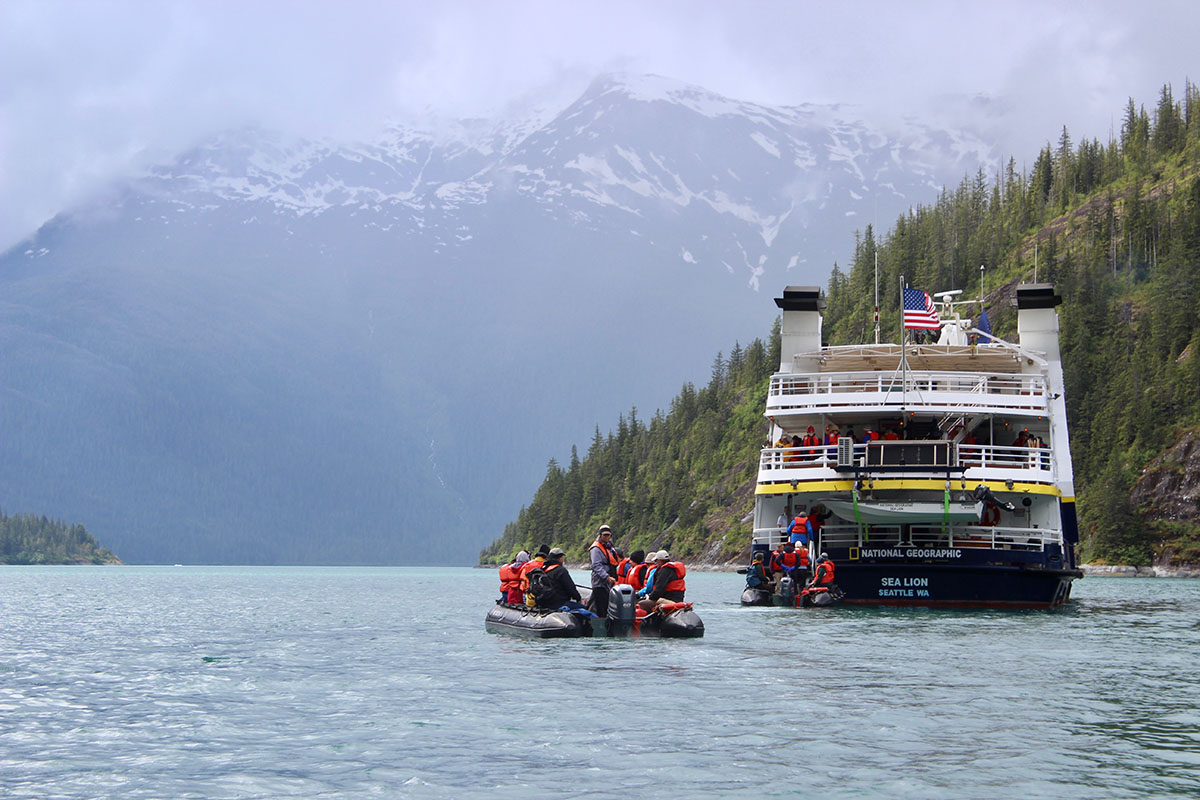
I’ve always been one to believe that small changes can cumulatively make a big difference. Which is why, from now on, I’m going to make more of an effort to report bigger on a smaller scale, striving to be less negligent of what’s right in front of me. My hope is that this may be a meaningful avenue of change, and potentially result in shifts of perception at a local level, even at times when federal or state regulation may not support it. And maybe now, thanks to the insight I gained from my trip to Alaska, I can rest a little easier, now that I know the answers to my questions were—no pun intended—right in front of me all along.